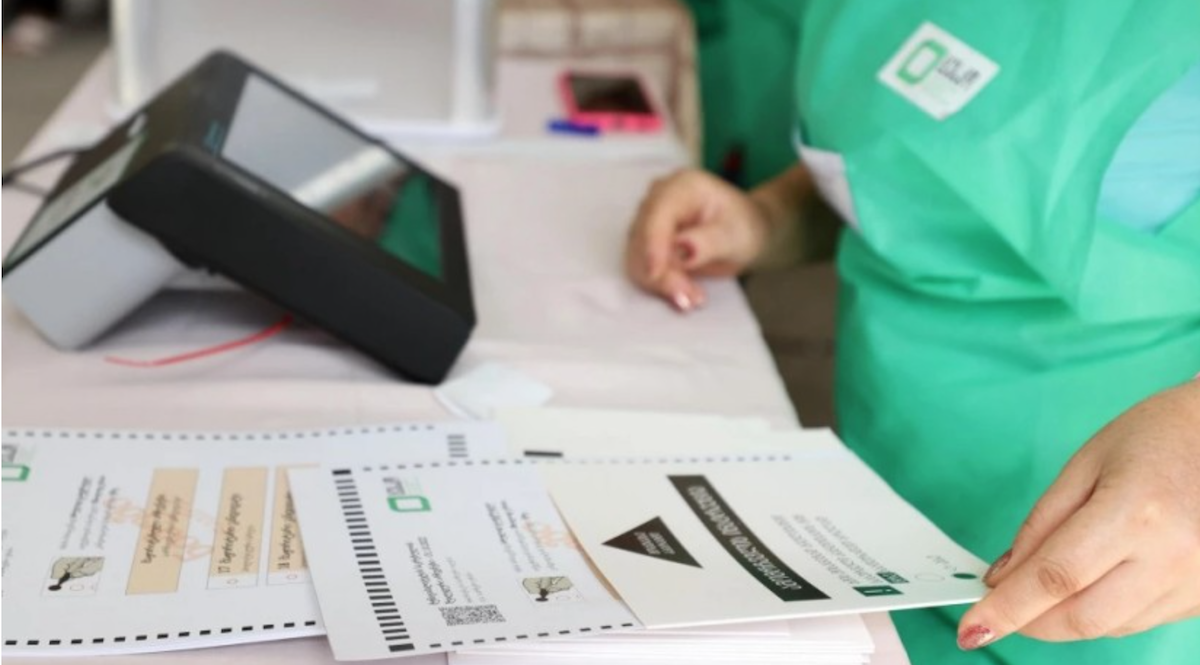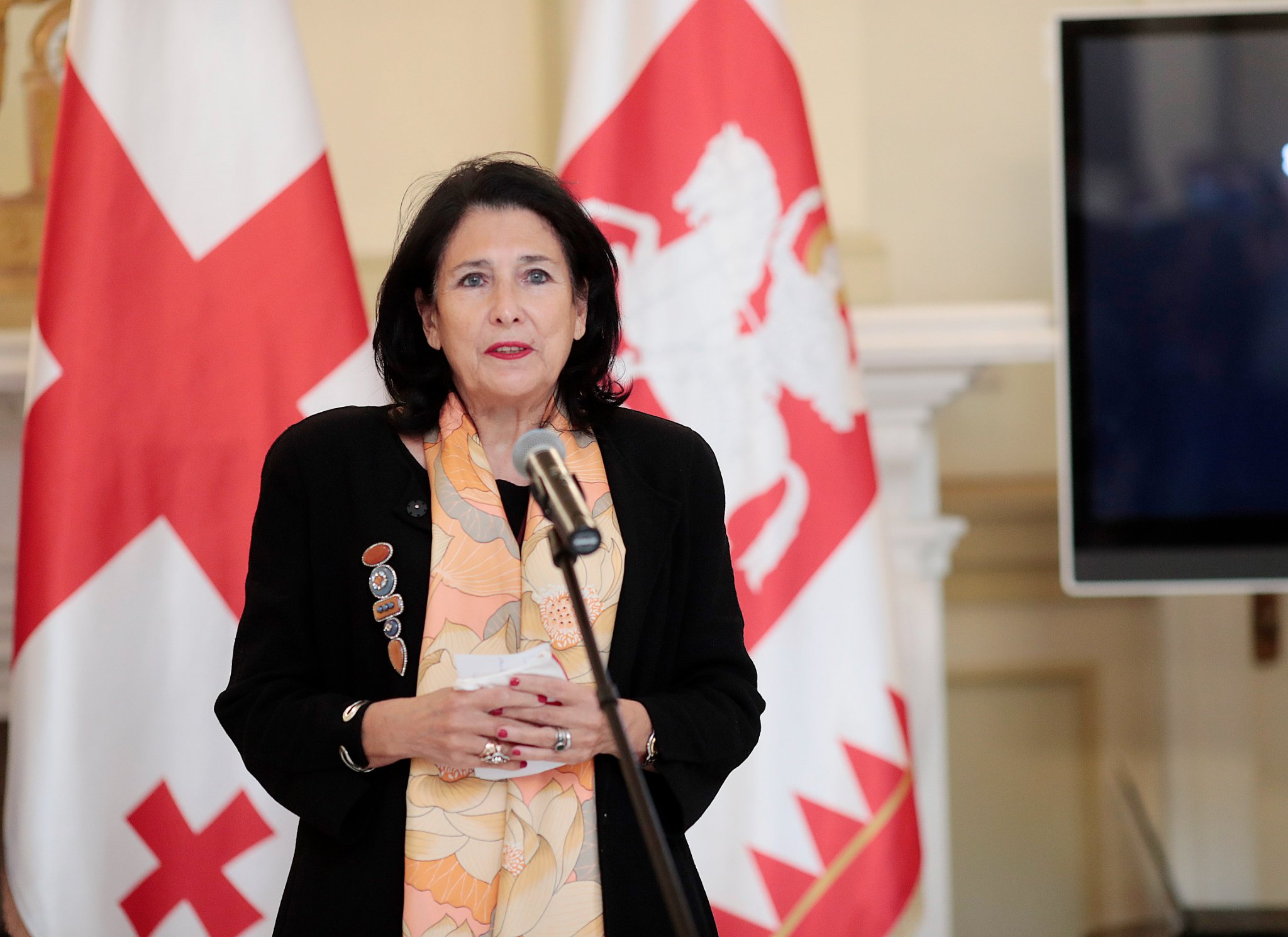
Analysis of Georgian election violations
Three Georgian non-governmental organizations have issued a joint report strongly criticizing the parliamentary elections held on October 26. The report outlines evidence of violations both before and during the election process.
“More than 3,500 observers documented widespread, systemic violations designed to secure the ruling party’s victory. These findings cast serious doubt on the legitimacy of the newly elected parliament,” the statement reads. The report was signed by the International Society for Fair Elections and Democracy (ISFED), My Vote, and the Georgian Young Lawyers Association (GYLA).
All three organizations served as election observers and based their findings, in part, on their firsthand experiences.
Key conclusion:
The scope, scale, and consistency of the documented violations confirm that the elections were fundamentally rigged. This was achieved through voter intimidation, obstruction of monitoring efforts, and manipulation of voting procedures.
Key findings and evidence of election fraud
ISFED’s findings:
● Parallel voter lists and organized transportation to polling stations. ISFED employed the Parallel Vote Tabulation (PVT) methodology.
- At 31% of polling stations, coordinators from the ruling “Georgian Dream” party were observed compiling their own voter lists.
- At 19% of polling stations, organized transportation of voters to cast their votes was recorded.
These incidents suggest a coordinated effort to control voter turnout and influence their choices in favour of the ruling party..
● Coercion and intimidation of voters. Physical and verbal altercations were reported at 11% of polling stations, creating a hostile environment that likely discouraged opposition voters from participating.
● Voter bribery and multiple voting.
- Evidence of voter bribery was found at 13% of polling stations.
- ISFED also documented two cases of ballot-stuffing and 12 cases of multiple voting.
These actions artificially inflated support for the ruling party and undermined the credibility of the electoral process.
● Issues with voter marking. Violations related to the proper marking of voters who had already cast their ballots were observed at 9% of polling stations.
● Expulsion of observers and lack of transparency. Incidents of restricting observers’ rights or expelling them were documented at 30 polling stations, highlighting a lack of commitment to transparency.
By obstructing independent monitoring, election officials eroded public trust in the process.
● Unnatural discrepancies in voter turnout by gender. In some polling stations, male voter turnout exceeded 100%, indicating that the number of male voters recorded surpassed the number of registered male voters.
Such discrepancies, if accurate, strongly suggest manipulations at these polling stations.
● Complaints. ISFED filed 294 complaints in total, reflecting the widespread and systemic nature of the violations.
● Parallel voter lists and organized transportation to polling stations. ISFED employed the Parallel Vote Tabulation (PVT) methodology.
- At 31% of polling stations, coordinators from the ruling “Georgian Dream” party were observed compiling their own voter lists.
- At 19% of polling stations, organized transportation of voters to cast their votes was recorded.
These incidents suggest a coordinated effort to control voter turnout and influence their choices in favour of the ruling party.
● Coercion and intimidation of voters. Physical and verbal altercations were reported at 11% of polling stations, creating a hostile environment that likely discouraged opposition voters from participating.
● Voter bribery and multiple voting.
- Evidence of voter bribery was found at 13% of polling stations.
- ISFED also documented two cases of ballot-stuffing and 12 cases of multiple voting.
These actions artificially inflated support for the ruling party and undermined the credibility of the electoral process.
● Issues with voter marking. Violations related to the proper marking of voters who had already cast their ballots were observed at 9% of polling stations.
● Expulsion of observers and lack of transparency. Incidents of restricting observers’ rights or expelling them were documented at 30 polling stations, highlighting a lack of commitment to transparency.
By obstructing independent monitoring, election officials eroded public trust in the process.
● Unnatural discrepancies in voter turnout by gender. In some polling stations, male voter turnout exceeded 100%, indicating that the number of male voters recorded surpassed the number of registered male voters.
Such discrepancies, if accurate, strongly suggest manipulations at these polling stations.
● Complaints. ISFED filed 294 complaints in total, reflecting the widespread and systemic nature of the violations.
Findings: ISFED’s PVT data aligns with the election results published by the Central Election Commission. However, given the systemic voter intimidation, manipulation, and pre-election bribery, this alignment does not lend legitimacy to the elections.
ISFED concludes that the documented cases of voter coercion, election-day manipulations, and restrictions on observers’ rights clearly demonstrate that the elections fail to reflect the true will of the people.
Findings of the My Vote coalition of 30 NGOs
● Widespread violations at polling stations. On election day, the coalition monitored 1,200 polling stations, recording violations at over half—652 stations.
This scale of violations suggests they were not isolated incidents but rather part of a coordinated scheme.
● Irregularities in voter marking and ID verification were observed at 191 and 153 polling stations, respectively.
These issues potentially enabled repeated voting by the same individuals, representing a key method for artificially inflating votes in favor of the ruling party.
● Systematic restrictions on observer rights. Observers faced repeated violations of their rights, including bans on taking photos, filming, or submitting complaints. Such incidents were documented at 160 polling stations and included intimidation and even physical expulsion.
These actions significantly undermined transparency and obstructed independent oversight.
● Violation of ballot secrecy. Breaches of voting confidentiality were reported at 365 polling stations.
These included:
- Surveillance cameras positioned to compromise ballot secrecy;
- Polling station officials monitoring voters while they filled out their ballots;
- Observers witnessing individual voters inside the voting booths.
Such practices were intended to pressure or intimidate voters into supporting the ruling party.
● Violence and presence of unauthorized individuals at polling stations.
- Physical violence and altercations were recorded at 85 polling stations.
- Intimidation of voters and observers by unauthorized individuals was documented at 259 polling stations.
This hostile environment underscores an organized effort to control the voting process and suppress opposition participation.
● Complaints. The “My Vote” coalition demanded the annulment of results at 246 polling stations across 29 districts, involving over 417,000 registered voters.
These numbers highlight the seriousness and scope of the violations.
Findings: The coalition concludes that these violations were not isolated incidents but part of a deliberate scheme to manipulate the final election results.
Evidence such as the confiscation of ID documents, collection of citizens’ personal information, and the presence of unauthorized individuals created an atmosphere of intimidation and coercion.
The coalition’s findings also reveal a lack of response from election administrators and law enforcement agencies, further suggesting state complicity in the election fraud.
GYLA’s findings:
● Violation of ballot secrecy and voter intimidation.
- At numerous polling stations, surveillance cameras were installed in ways that compromised the secrecy of voting booths;
- Registration tables and ballot boxes were often arranged in a manner that exposed voters’ choices;
- Poor-quality ballot papers revealed voters’ selections through the back of the sheet.
These violations allowed nearby individuals to see voters’ choices, significantly undermining ballot secrecy and increasing the risk of voter intimidation.
● Irregularities in marking voters who had already cast their ballots. GYLA documented multiple instances of such violations. Observers reported inconsistent procedures for checking markings on voters’ hands, with some voters entering polling stations without undergoing the required check.
As a result, voters who were already marked were able to vote again, raising serious concerns about the fairness of the election results.
● Obstruction and intimidation of election observers. At many polling stations, observers faced interference in their work. When they raised issues, they encountered hostility and were forced to leave the premises.
The obstruction of observers, coupled with the Central Election Commission’s (CEC) inadequate response to these incidents, suggests deliberate efforts to undermine accountability..
●
Complaints. Due to systematic violations of ballot secrecy, GYLA demanded the annulment of results at 2,263 polling stations where electronic technologies were used.
GYLA also called for disciplinary measures against polling station commission members who violated election procedures.
Findings: The October 26, 2024, parliamentary election day was marred by significant violations and was largely characterized by inequality, violence, and tension. Widespread breaches of ballot secrecy undermined the constitutionally protected right to a free vote.
Considering the scale and systemic nature of these violations, GYLA has filed a request with the prosecutor’s office, urging an investigation into the documented evidence.
Data suggesting election fraud was systematic, not isolated
● Coordinated voter control and intimidation.
- Observers from all three missions reported “parallel” voter registration by coordinators of the ruling “Georgian Dream”;
- Presence of unauthorized individuals at polling stations;
- Numerous attempts at voter bribery.
This points to a structured plan to control voter behavior in favor of the ruling party.
Investigative journalistic reports before and after the elections confirmed that the ruling party developed a well-organized system to monitor voters. Two main methods were highlighted:
- Collecting personal information before the election, including “registering” ID card details or confiscating IDs.
- Mobilizing voters on election day through call centres.
Calls by observers to investigate these reports were ignored by the prosecutor’s office and law enforcement agencies.
● Systematic obstruction of observer work. Observers from all three organizations faced interference, intimidation, and expulsion from polling stations. These actions were enabled by minimal or no response from law enforcement agencies.
This suggests a deliberate effort to limit transparency and allow violations to occur with impunity.
● Violation of ballot secrecy. Documented violations include:
- Strategic placement of surveillance cameras compromising voting secrecy,
- Ballots designed in a way that allowed voter choices to be seen from the back
- Voters being forced to photograph their completed ballots, allegedly to prove their vote;
- Voters being directly monitored inside voting booths.
These incidents point to systematic efforts to control voter choices.
● Multiple voting and procedural violations. Instances of the same individual voting multiple times and procedural irregularities were reported in all three monitoring reports. These reflect deliberate manipulation of the voting process to inflate votes for the ruling party.
● Pre-election manipulation. Reports of ID confiscation and personal data collection during the pre-election period suggest attempts to intimidate vulnerable voters or manipulate their votes.
This pre-election manipulation laid the groundwork for election day violations.
● Coordination of election fraud methods by the CEC. The Central Election Commission (CEC) played a crucial role in managing the electoral process. Pre-election amendments to the rules assigned specific individuals to oversee voter marking, verification, and identification procedures.
Without the active support of officials and the CEC itself, the obstruction of observer work would not have been so widespread.
The presence of unauthorized individuals at polling stations, problematic placement of surveillance cameras, and disregard for proper voter marking procedures suggest that the CEC itself promoted methods to control voter behavior and undermine transparency.
Допуск посторонних лиц на избирательные участки, установка камер наблюдения в проблемных местах и игнорирование надлежащих процедур маркировки заставляют предполагать, что сама ЦИК продвигала методы, направленные на контроль поведения избирателей и подрыв прозрачности.
● Ineffective post-election complaints’ consideration process. District election commissions and courts rejected all complaints and lawsuits filed by independent monitoring organizations.
In rare cases where lawsuits were upheld—such as in Tetritskaro and Gori districts—these decisions were overturned by the appellate court.
The post-election complaints process did not meet international standards, according to the reports of all three monitoring missions.
Analysis of Georgian election violations




